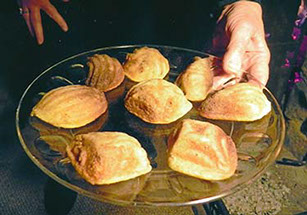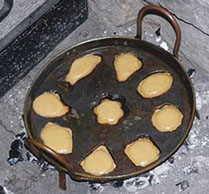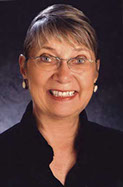

Recipient of the 2002 Alice P. Kenney Award for research and writing on the food customs and diet of the Dutch settlers in New Netherland
Hudson Valley food; Dutch colonial food history; recipes; books; unusual regional products
Since the winter of 2014/15 was such a looong and cold winter, we had quite a lot of opportunity to cook in our fireplace. One of the things we tried for the first time was baking Evenveeltjes, which roughly means "Equals" as the little cakes are equal in volume, though different in shape. I had bought an 19th century pan by the same name when we were last in the Netherlands. It took quite a bit of doing, but we managed to make an edible batch. More reading and experimenting will be necessary, but these were quite nice.
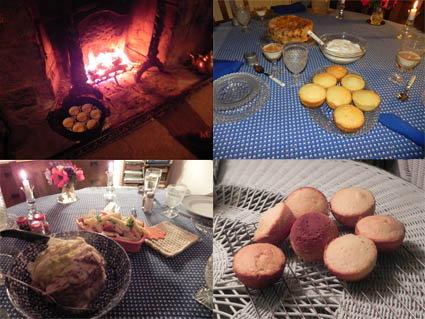
Recently I had a chance to cook some dishes in our fireplace with our friend, foodwriter/teacher Stephen Schmidt. He wanted to try a recipe for cupcakes, made the way they were in cups in the Dutch oven. As you can see, thanks to my husband Don's careful fire tending they came out just beautiful! I wanted to make Sunday Cabbage, a 19th-century recipe for a cabbage, taken apart and reconstituted layer for layer with flavored ground beef between the leaves. It is then wrapped in a towel and cooked for 2 hours in a pot of boiling water. It is a delicious dish, especially served with carrots and parsnips. With cup cakes, an English 17th century seed cakes and a Dutch rum custard pudding for dessert it was quite the meal.
I had a wonderful opportunity to experiment in the open hearth (our fireplace) with an 18th-century Dutch oven, lent to me for precisely that purpose. Curator Leslie Lefevre-Stratton of the Huguenot Historical Society, owners of the pan, was present when we baked a variety of recipes: a raised pie, biscuits, cookies, and a 19th century apple pudding from the Society's cookbook As Our Ancestors Cooked. The pan worked as well as a modern-day oven, baked evenly, and produced delicious baked goods as you can see in the pictures.
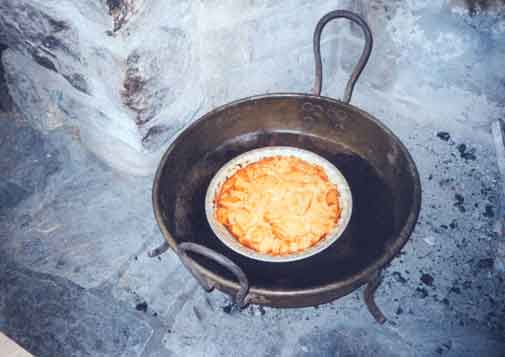

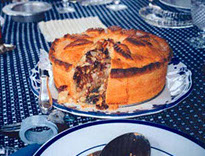
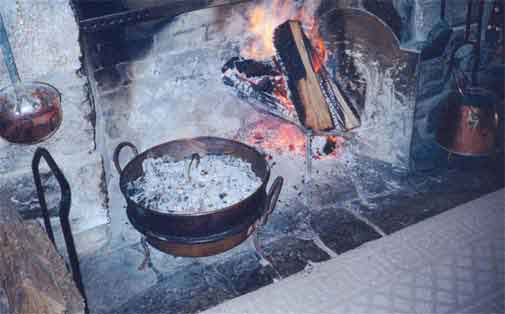
Boterbiesjes (butter cookies)
3 cups flour
1/2 pound butter, softened
1-1/2 cups sugar
Combine the ingredients in the processor outfitted with a metal blade and process until the dough hangs together. Remove and either roll out and cut with cookie cutters, or cut into thumb-size strips (see picture), or make a long roll of the dough and cut into thin round cookies. Bake at 350 degrees for 7 to 10 minutes. The longer you bake them the harder they'll get. Not everyone might like the cookies hard, so experiment with the first batch.
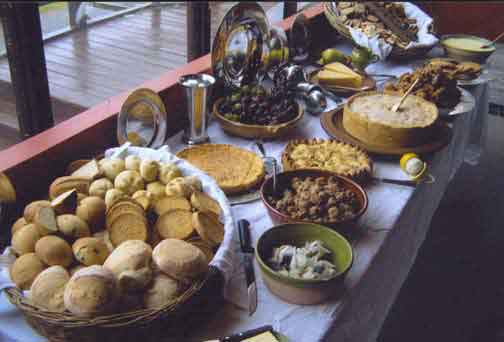
I have done a lot of historical cooking, but when I gave a talk at Plimoth Plantation, the food department there did the work and what a beautiful job they did! All the recipes were prepared from my book Dutch Recipes with an American Connection, which is part of the larger book Matters of Taste (with Dr. Donna R. Barnes). See also the webpage for "Books."
